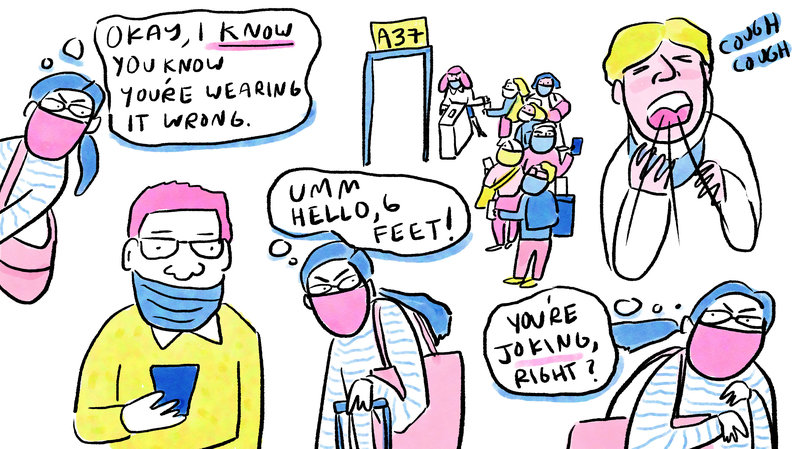Flying during COVID raises understandable concerns about personal safety, airline policies, and airport procedures. With varying rules across countries and airports, travelers often find themselves overwhelmed. To help clear the air, we turned to experts in aviation and public health to answer some of the most pressing questions about flying in a pandemic-affected world.
1. Is it really up to the passenger to wear the mask correctly?
In some parts of the world, mask-wearing on planes is regulated by national law. For example, India mandated that all passengers wear both masks and gloves during flights. However, in the United States, there is no overarching federal law requiring mask use in public spaces, including airports. Instead, state and local regulations determine mask mandates, and each airport adheres to those rules.
What does this mean for you? Always carry a high-quality mask, such as a KN95 or N95, when traveling. Even if not strictly enforced, wearing a mask is one of the most effective ways to reduce exposure—especially in crowded terminals and during boarding.
2. Is there a way to prevent crowds at airports?
Airports often have posted rules for social distancing and masking, but enforcement can be inconsistent. Dr. Wu, Director of Emory University School of Medicine, explains that airport environments are typically fast-paced and unpredictable, making it difficult for staff to ensure compliance.
The most effective solution may be behavioral: just as wearing seatbelts has become second nature in cars, masking and distancing must become self-imposed norms. While that kind of shift takes time, travelers can lead by example.
- Book direct flights to minimize the number of airport terminals you pass through.
- Avoid congregating at gates or food courts before boarding.
- Stay alert and move away from crowds when possible.
3. What happened to the “no middle seat” policy?
Earlier in the pandemic, many airlines temporarily blocked middle seats to allow more space between passengers. Unfortunately, that policy has largely disappeared. Among major U.S. airlines, only Delta maintained the no-middle-seat rule well into 2021, but even that policy was eventually phased out.
While airlines may cite economic or logistical reasons, the loss of this distancing measure adds to the burden on individual travelers. Since you can’t always rely on others to wear masks or keep distance, it’s best to take additional precautions:
- Choose seats near windows to avoid high-traffic aisle areas.
- Board as late as possible to reduce time spent in crowded cabins.
- Bring disinfectant wipes to clean your seat area before settling in.
In other countries, some airlines go a step further by recommending that passengers avoid touching their face during the flight, a measure supported by health professionals.
4. How reliable is the mandatory COVID-19 test policy for international arrivals?
In response to global case spikes, the Centers for Disease Control and Prevention (CDC) introduced a policy requiring all passengers flying into the U.S. to show a negative COVID-19 test result. The test must be taken within three days of the flight.
This rule is a step in the right direction, but it’s not foolproof. Testing can help filter out actively contagious individuals, but it doesn’t eliminate the risk entirely. Some passengers may contract the virus after their test, or false negatives may occur.
It’s wise to treat the test policy as one layer of protection—not the only one. Continue to wear a mask, practice hand hygiene, and avoid close contact even after presenting a negative test.
Additional Safety Tips for Flying During COVID
To boost your safety and peace of mind while flying during COVID, keep these additional tips in mind:
- Use mobile boarding passes to limit contact with surfaces and personnel.
- Choose airlines with strong sanitation practices and transparent safety protocols.
- Bring your own food and water to avoid relying on in-flight or terminal concessions.
As the world continues to adjust, guidelines for flying during COVID will likely evolve. But by staying informed and taking proactive measures, travelers can navigate the skies more confidently and responsibly.
Photo Credit: Malaka Gharib/NPR

